Review of "Ogorodnik" tomato: advantages and disadvantages, growing conditions and characteristics of the finished crop
Ogorodnik tomatoes attracted the attention of Russian summer residents for their taste, shape, ease of care and high yield. The variety is successfully grown in various regions of the country: tomatoes tolerate both cool and hot weather well.
If you are looking for a reliable, productive variety, then Ogorodnik is your choice.
The content of the article
Description of the variety
The variety was bred by specialists from the All-Union Scientific Research Institute for Breeding and Seed Growing of Vegetable Crops (in 2017 it was transformed into the Federal Scientific Center for Vegetable Growing). Designed for growing in the spring-summer turnover both in film greenhouses and in open beds.
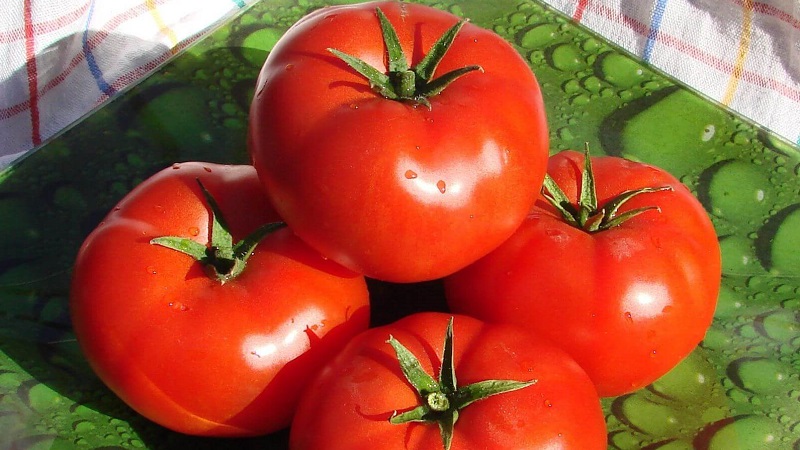
Determinant variety, mid-season... Fruit ripening period is 95-105 days. The height of the bushes is 120-150 cm in greenhouses, up to 60-80 cm in the open field. The leaves grow sparsely, which allows you to grow tomatoes under a film and not cut them off.
Fruit characteristics and yield
The photo above shows that fruits are bright red in color, round in shape with glossy skin and dense fleshy sweet pulp.
In addition, "gardeners" are characterized by:
- unobtrusive tomato aroma;
- unexpressed seminal chambers;
- weighing 140-160 g (up to 6 ovaries are formed on the brush; if part is removed, the weight of one tomato reaches 250-300 g).
- in the open field, 5.5-6 kg of tomatoes are harvested from 1 square meter, in the greenhouse - 11-14 kg.
How to grow seedlings
Sow seeds for seedlings 60 days before transplanting into beds... In central Russia, the terms are as follows: in March - for the greenhouse and April - for open ground.
Seed preparation
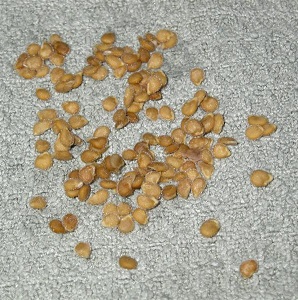 Experienced gardeners spend preparation of seeds in seven stages.
Experienced gardeners spend preparation of seeds in seven stages.
The first stage is the selection of planting material... Add seeds, examine and divide by size: small, medium and large. If there are a lot of seeds, leave the last two categories for planting.
Dissolve 1 tablespoon of salt in 200 ml of water, place the grains in the solution for 15-20 minutes. Discard the seeds that have floated to the surface, and rinse those that have sunk to the bottom with clean water.
The second stage is warming up... After spreading the seeds on a cotton cloth, place them on a central heating battery for 1.5-2 days.
Interesting! There is also a faster way: put a metal mesh on a table (floor) lamp in the shape of a cylinder, on top - paper and a bag with grains. Cover with a paper cap. Make sure that the temperature does not rise above +60 degrees. The duration of the procedure is 3 hours.
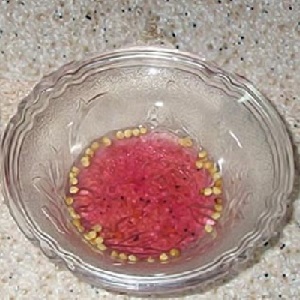 The third stage is disinfection... Prepare a 1% solution of potassium permanganate: dissolve a teaspoon of potassium permanganate in three glasses of water. Place the seeds in the prepared solution for 15-20 minutes, then rinse with running water.
The third stage is disinfection... Prepare a 1% solution of potassium permanganate: dissolve a teaspoon of potassium permanganate in three glasses of water. Place the seeds in the prepared solution for 15-20 minutes, then rinse with running water.
If there is no potassium permanganate, use hydrogen peroxide: in two glasses of warm (+40 degrees) water, dissolve 1 tbsp. l. 3% peroxide, place in seeds for 12 hours. This method also speeds up seed germination. Remember: peroxide solution is not used for pelleted (with a nutritious shell) and inlaid seeds (with a thin water-soluble layer containing disinfecting and growth-stimulating components).
The fourth stage is bubbling... Place the seeds in water heated to + 26-30 degrees and stir them vigorously every hour.Finish the procedure as soon as the embryos appear on the seeds, or after 15-18 hours.
The fifth stage is soaking... Fill the grains with warm water or a solution of biostimulating drugs: "Zircon", "Epin", "Immunocytofit".
Sixth stage - hardening... Wrap the seeds in a cotton cloth or gauze, wrap them with plastic on top and put them in a cool (-2-3 degrees) place for 8 hours: refrigerator, balcony or open veranda. Then bring it back to heat for 8 hours. Change the temperature regime 5-6 times.
Important! If you are not sure that you will carry out the procedure correctly, do not harden all planting material - there is a high risk of destroying the seeds.
Seventh stage - germination... Place the grains on cheesecloth, cotton or cotton pads, wet and spread out on a flat dish. Make sure that the fabric is always wet and the air temperature is kept within + 25-30 degrees. Sow the seeds after 2-3 mm embryos appear.
Capacity and soil
Use special or food grade plastic containers, cups or cut bottles.
Buy the soil from the store or prepare it yourself... To do this, mix garden soil, non-acidic peat, sand and humus or sifted mature compost in a ratio of 2: 4: 1: 2, add sifted wood ash (or dolomite flour), sphagnum moss and fallen needles.
Important! Treat containers and soil mixture with a strong solution of potassium permanganate.
Sowing
Spread out the soil in the selected containers, draw a centimeter groove, place the seeds and cover with soil... Moisten the ground with a spray bottle, cover the containers with plastic wrap and place in a warm place.
Growing and care
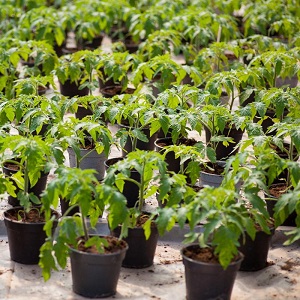 After emergence, transfer the boxes to a well-lit windowsill and remove the film... Use a spoon, syringe, or spray bottle to water the seedlings as the soil dries, so as not to wash out weak roots with water.
After emergence, transfer the boxes to a well-lit windowsill and remove the film... Use a spoon, syringe, or spray bottle to water the seedlings as the soil dries, so as not to wash out weak roots with water.
With the appearance of the first two real leaves, dive the tomatoes, planting them in separate containers... Add mineral fertilizers to the soil at the rate of 1 tbsp. spoon for 5 liters of soil mixture. Apply compound fertilizer every 10-14 days.
Water tomato seedlings only at the root, being careful not to wet the cotyledon leaves.
Start hardening seedlings 2-3 weeks before transplanting to the beds: take out the boxes during the day to the open air, first for 2-3 hours, and add an hour each subsequent day. For 3-4 days, leave the seedlings to spend the night outside, if there is no night frost.
Read also:
Tomato "Mashenka" and the secrets of its cultivation
How to grow tomatoes
For tomatoes, select an area where cucumbers, zucchini, dill or carrots were previously grown... Tomatoes and potatoes are considered bad predecessors. Prepare the soil in advance: in the fall, apply humus and fertilizers, and on the day of planting seedlings, spill the area with a solution of potassium permanganate.
Landing
Remove the seedlings along with the earthy clod, taking care not to damage the roots... Plant tomatoes Gardener according to the scheme 50 × 50 cm - 1 sq. m place no more than 4 pieces.
Care
Water the bushes as the soil dries up with warm water under the root... Remove weeds and loosen the soil each time you water. Apply fertilizers 3-4 times a season (every 2-3 weeks), alternating mineral and organic fertilizing.
Remember! Fertilizers should not come into contact with the aerial part of the plant (stem, leaves).
Depending on where the tomatoes grow - in the greenhouse or outdoors - choose the method of forming the bush.: in one, three stems and with the translation of the growth point.
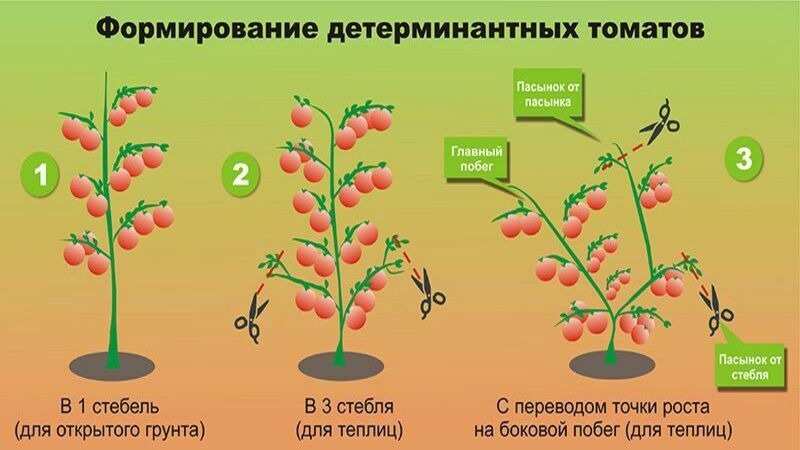
Decide the question of tying yourself - depending on convenience, availability of funds and time. In any case, the tomato will yield a good harvest.
Features of cultivation and possible difficulties
In dry and hot weather, water the tomatoes every day - the Ogorodnik variety is picky about watering.Place a mulch layer (hay or cut grass) between the rows to reduce moisture evaporation and weed growth.
To increase the weight of one fruit, remove part of the ovary.
Advice! Place containers with manure diluted with water around the greenhouse - this will replace root dressing.
There are no difficulties in growing: you can refuse from forming a bush, and from top dressing, and from frequent watering, but you will still get a harvest.
Diseases and pests
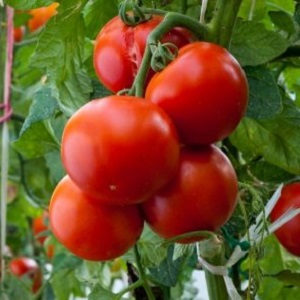 Tomatoes are immune to several diseases: late blight, fusarium, pillar and tobacco mosaic virus. However, prophylactic treatment of plantings against fungi with Fitosporin, Ecosil or Quadris will not be superfluous.
Tomatoes are immune to several diseases: late blight, fusarium, pillar and tobacco mosaic virus. However, prophylactic treatment of plantings against fungi with Fitosporin, Ecosil or Quadris will not be superfluous.
Of the pests The gardener is threatened by the nematode and the Colorado potato beetle.
Nematoda appears more often on greenhouse tomatoes... In plants damaged by worms, leaves wilt. To check, carefully excavate the roots: the affected plant has green or white roots crawling out, seals and swellings are found. Dig up and burn the damaged bush and plants a meter away. Spill the soil with boiling water or a hot solution of potassium permanganate.
To get rid of parasites, use:
- methyl bromide;
- nonmagon;
- karbofos;
- lindane.
After treatment, do not plant fruiting plants in the treated area for a year.
For reference. Plant tagetes and calendula near tomatoes - their aromas scare away nematodes.
Exist environmentally friendly, but narrowly targeted nematicide preparations:
- "Nematofagin BT";
- "Basamil";
- "Aversectin C";
- "Metarizin";
- "Pecilomycin".
Add them 15-20 days before planting seedlings or directly into the holes when landing.
Inspect the bushes constantly... If Colorado beetles are found, collect in a jar and destroy.
Important! Prepare the poison from the beetles themselves. Collect a 1 liter jar of adults, pour into a 20 liter bucket and fill with water to the brim. After the beetles gasp (they sink to the bottom), insist on the poison for another week. Spray the tomatoes with a freshly prepared solution diluted with water 1: 1 or 1: 2 (choose the required proportion yourself).
Of chemical preparations, they have worked well:
- "Commander";
- "Typhoon";
- "Bombardier";
- "Bankol".
About other varieties of tomatoes:
The nuances of growing in open ground and in a greenhouse
Open your greenhouses frequently to ensure For the gardener, optimal air circulation.
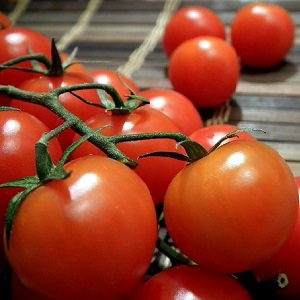 Farmers who have already grown this variety note that in open ground in the sun the bushes bear fruit weaker.
Farmers who have already grown this variety note that in open ground in the sun the bushes bear fruit weaker.
In greenhouses, form tomatoes into three stems or with the transfer of the growing point to the side shoot... Which means in three stems: leave the main stem and two lower shoots. Shorten the side stepsons, leaving on each a brush with a flower and a leaf above it.
With the transfer of the growth point to the lateral shoot: leave the main shoot, one lowest stepchild, and then another shoot, but not on the main stem, but on the lower stepson. In the photo below there are schemes for the formation of tomatoes.
In the open field, form a gardener into one stem... In this case, it is advisable to tie it up so that the bush does not fall to the ground under the weight of the fruit.
Harvesting and application of the crop
The first fruits appear on the branches as early as 95-105 days... From 1 sq. m in open beds get 5.5-6 kg of tomatoes, and in film or glass shelters - 11-14 kg. Fruiting lasts until the first frost, after which the formation of ovaries stops.
Fresh tomatoes are used in salads, sandwiches, canned snacks, lecho, sauces, and smaller fruits are eaten whole. The variety is suitable for industrial cultivation, perfectly tolerates storage and transportation.
Harvested in a state of biological ripeness (not ripe, green) tomatoes ripen at home.
Advantages and disadvantages of the variety
Unlike many other varieties Ogorodnik tomatoes have no visible and significant flaws.
The benefits include:
- yield;
- large-fruited;
- taste and presentation;
- resistance to cold weather;
- versatility of use.
Farmers reviews
Gardeners note that with good care, large fruits grow.... Tomatoes are loved for their taste and aroma. Many grow the variety for sale and for conservation.
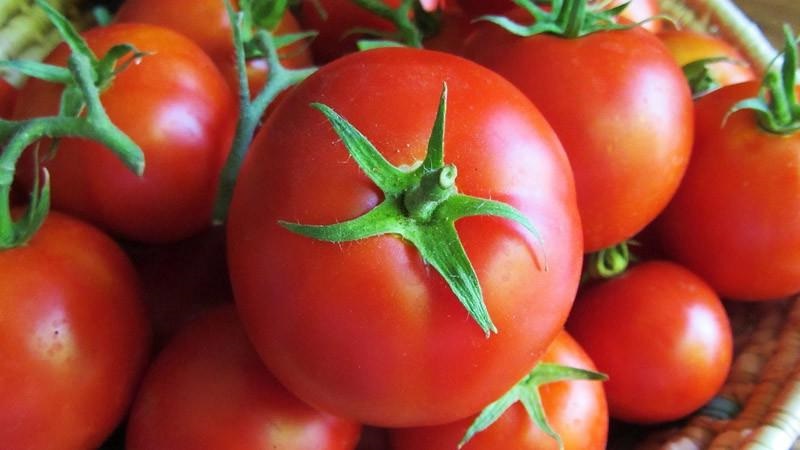
Veronica Azarova, Rostov-on-Don: “I know this variety well. I regularly remove ovaries from the brushes to form large fruits. If you do everything correctly, then it is likely that real giants will form on the bushes. I bring the Gardener for sale, I hear extremely positive feedback from people. At the moment I am not going to change the Ogorodnik tomato for other varieties ".
Natalia Karpova, Yekaterinburg: “When insects appear on the Ogorodnik bushes, I collect them by hand. As a last resort, chamomile decoction saves. It also helps against bacterial stains ".
Sergey Pashko, Ufa: “The variety can hardly be called stable. One year I collected small tomatoes, the second year I got large ones so much that my wife could not use them for conservation. Nevertheless, I put "+" for Ogorodnik and I am not going to give up growing it. Tomatoes are really tasty and high quality ".
Conclusion
The high yield of Ogorodnik tomatoes is achieved through simple care: frequent watering, garters and pinching. However, the bushes will bear fruit (albeit less weight) and without careful maintenance. Tomatoes are used in preservation, fresh salads, and are grown for sale both on a small and industrial scale. The fruits tolerate storage and transportation well.